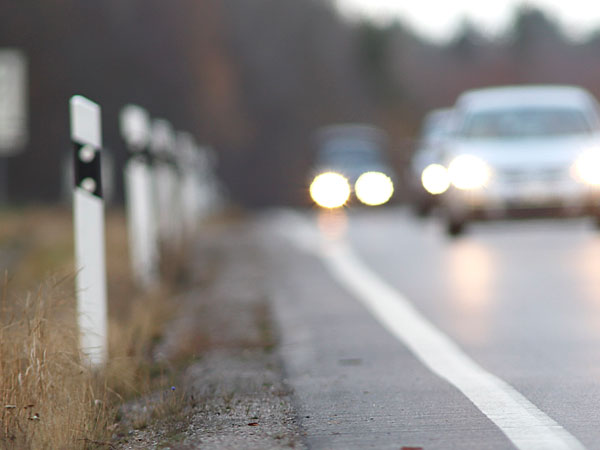Although we know that tyre and road surface wear generates significant emissions of microplastics, knowledge about them is very limited. This is the conclusion of a report issued by the Swedish National Road and Transport Research Institute (VTI).
In a new report, researchers from VTI and Chalmers University of Technology have compiled available knowledge on microplastic particles emitted from wear and tear on tyres and road surfaces. The report reveals that knowledge is very limited regarding parameters such as how the particles are dispersed, the levels at which they occur in various environments, how quickly they degrade and how best to sample and analyse them.

Microplastic particles are largely the result of tyre wear, they can also be traced to worn road markings and surfaces containing polymer modified bitumen.
Photo: Hejdlösa Bilder/VTI
The report was compiled as part of a government assignment performed by VTI between 2018 and 2020, to develop and disseminate knowledge of microplastics emissions from road traffic. Although these microplastic particles are largely the result of tyre wear, they can also be traced to worn road markings and surfaces containing polymer modified bitumen (PMBs). It is estimated that at least half of Sweden’s total emissions of microplastics come from tyre wear.
Studies have shown that microplastics are present everywhere in the environment. They have been found in watercourses and water treatment works, in soil, plants, food and drink, organisms and even humans. Microplastics specifically traceable to road traffic have been found in road dust, waterways, surface water and various sediments in areas including the Swedish west coast.
“We know that emissions of microparticles from tyre wear are very large, that they are likely to degrade extremely slowly in nature and that they contain substances hazardous to living organisms. We therefore have every reason to limit both the generation and dispersal of tyre-wear particles,” says Mikael Johannesson, research director at VTI.
Measures to reduce microplastics
The researchers have also compiled knowledge on possible measures to reduce both the generation and dispersal of microplastic particles. Lower speeds, limited vehicle mileage, reduced use of studded tyres, calmer driving behaviour, a transition to lighter vehicles and optimised wheel balancing are examples of measures that reduce the generation. A number of these measures also bring other benefits, such as reduced emissions of air pollutants and greenhouse gases, lower noise levels, fewer serious traffic accidents and reduced road maintenance. Measures that reduce the dispersal of microplastics include street cleaning and various types of plant to treat road surface water.
Microplastics from tyre and road wear: A literature review
 Contact:
Contact:
Mikael Johannesson
mikael.johannesson@vti.se
VTI, Swedish National Road and Transport Research Institute, Sweden






Follow us: